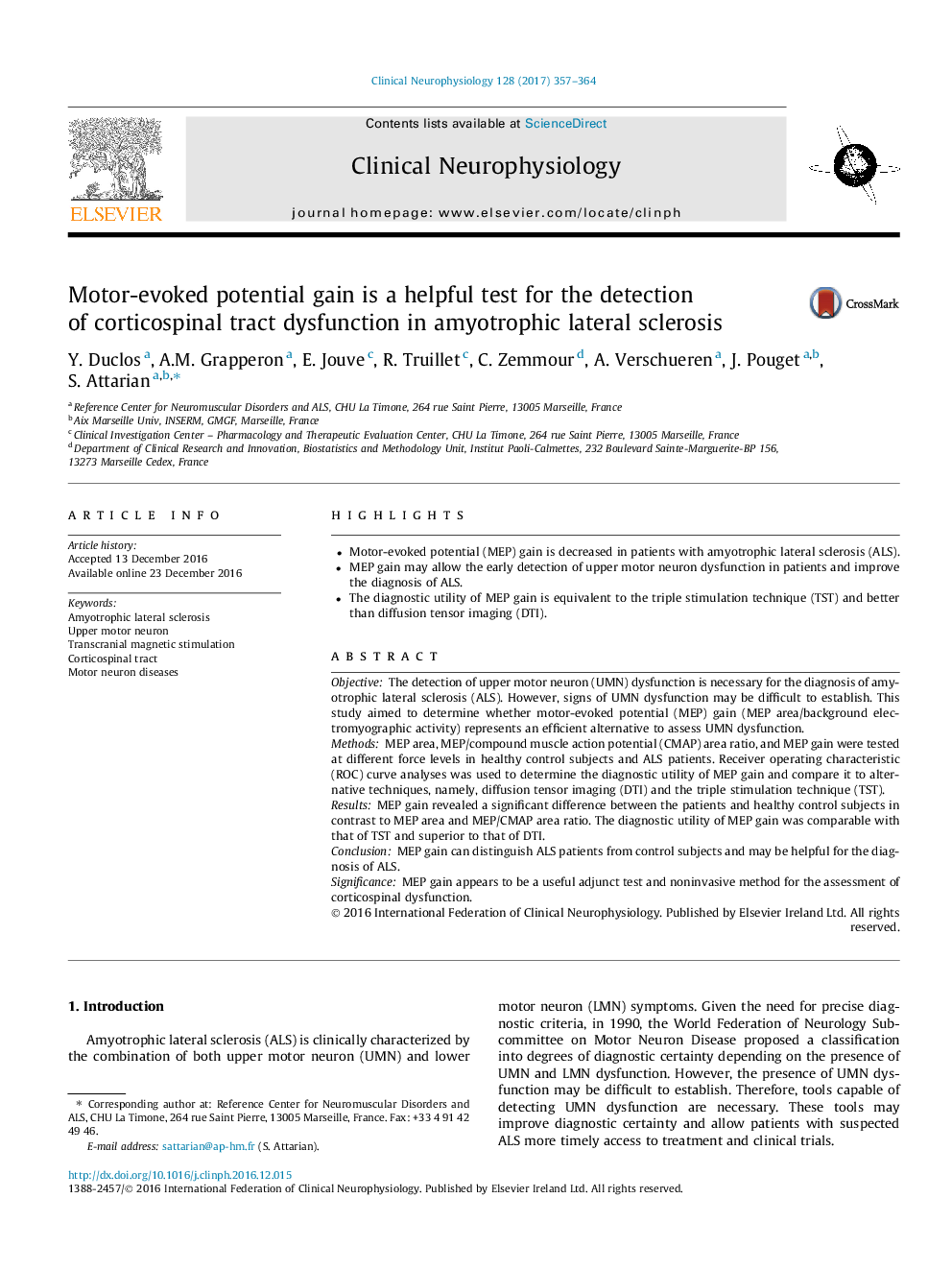| Article ID | Journal | Published Year | Pages | File Type |
|---|---|---|---|---|
| 5627803 | Clinical Neurophysiology | 2017 | 8 Pages |
â¢Motor-evoked potential (MEP) gain is decreased in patients with amyotrophic lateral sclerosis (ALS).â¢MEP gain may allow the early detection of upper motor neuron dysfunction in patients and improve the diagnosis of ALS.â¢The diagnostic utility of MEP gain is equivalent to the triple stimulation technique (TST) and better than diffusion tensor imaging (DTI).
ObjectiveThe detection of upper motor neuron (UMN) dysfunction is necessary for the diagnosis of amyotrophic lateral sclerosis (ALS). However, signs of UMN dysfunction may be difficult to establish. This study aimed to determine whether motor-evoked potential (MEP) gain (MEP area/background electromyographic activity) represents an efficient alternative to assess UMN dysfunction.MethodsMEP area, MEP/compound muscle action potential (CMAP) area ratio, and MEP gain were tested at different force levels in healthy control subjects and ALS patients. Receiver operating characteristic (ROC) curve analyses was used to determine the diagnostic utility of MEP gain and compare it to alternative techniques, namely, diffusion tensor imaging (DTI) and the triple stimulation technique (TST).ResultsMEP gain revealed a significant difference between the patients and healthy control subjects in contrast to MEP area and MEP/CMAP area ratio. The diagnostic utility of MEP gain was comparable with that of TST and superior to that of DTI.ConclusionMEP gain can distinguish ALS patients from control subjects and may be helpful for the diagnosis of ALS.SignificanceMEP gain appears to be a useful adjunct test and noninvasive method for the assessment of corticospinal dysfunction.
